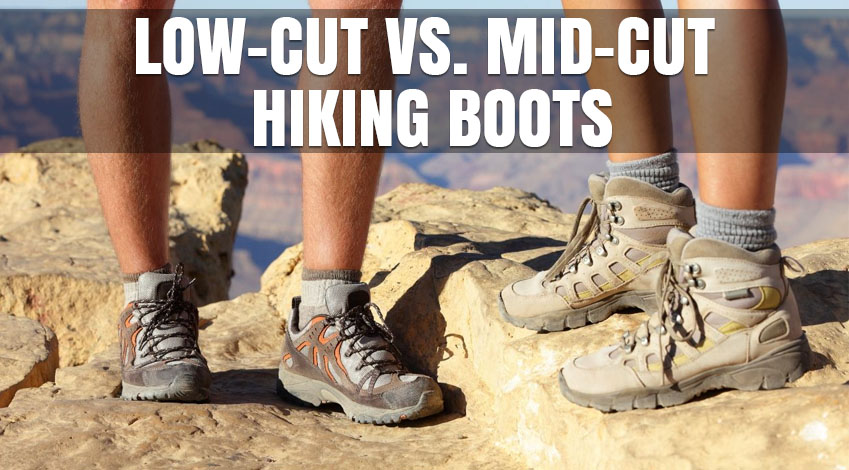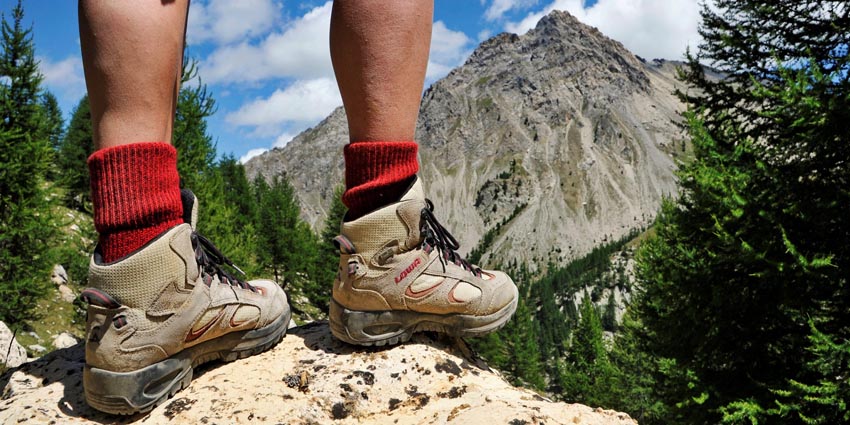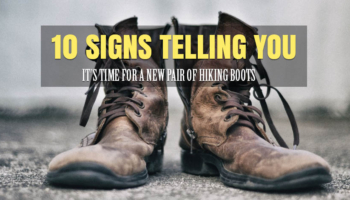
If you haven’t been hiking for a long time, the chances are you don’t have a pair of hiking boots just yet. Taking a look at the market is confusing and overwhelming, as there are myriad options to check. Unless you have figured out what type of hiking boots you want and what features they should have, the selection process will be rather difficult and slow.
There are many aspects to consider when picking your hiking boots, and one place to start is deciding between low and mid-cut hiking boots. Indeed, it can take some trials and errors, excellent and bad hikes until you figure out which type works best for you. Or you can start by reading our detailed description for each of these types of hiking boots. It will help you make a clear image and even decide.
What’s to say in a nutshell about low-cut and mid-cut hiking boots?
Low –cut models are typically lighter and more breathable than the mid-cut models, which is why they’re great for short hikes and well-maintained trails.
Mid-cut boots are sturdier and provide better ankle support, so you should try them on long hikes and rocky trails.
Both of these types of boots have ups and downs, so a detailed depiction is necessary.
When do low-cut hiking boots make the best option?
Low cut boots make the most appropriate choice for your average hikes. Should you hike on less challenging and well-maintained trails, the low cut boots are the best to wear. Basic light backpacking trips also make situations for taking your low cut boots.

Some people like to use the low cut boots even on rocky, uneven ground, as they’re easy to jump about in and to hop. If you will cover a lot of land one day and move very fast the next one, you should go with low cut boots as they’re lightweight and comfortable to move in.
There are many positives for low cut hiking boots, so here are the most significant to mention:
- They’re smaller than other boots, taking less space in your backpack
- They’re lightweight and ideal for one-day hikes or well-kept trails. Should you plan to jump across rocks or small rivers, you may rely on low cut hiking boots
- They don’t require a long break-in period
- They’re breathable and reliable for warm and hot weather
- All types of hiking boots have ups and downs, and the low-cut boots don’t make an exception. The most significant downside of low cut boots is that they provide less support for ankles while hiking.
- If you have weak ankles and plan a challenging hike while heavily loaded, the low cut hiking boots don’t make a safe choice, increasing your risk for ankle injuries.
When are mid-cut hiking boots the right choice?

If your hikes are long and your backpack is heavyweight, the mid-cut hiking boots are the more reliable choice. Rocky and challenging tracks will be easier to tackle with mid-cut hiking boots too.
Should you hike through snow and sloppy trails, you may rely on mid-cut hiking boots as they’re typically waterproof and insulated.
Due to their build, mid-cut hiking boots come with 1 or 2 lacing hooks at the ankle for better support, which you will need for rocky and uneven paths. The higher cut of these boots keeps twigs and stones from getting inside the shoes, which is a great advantage.
Hikers prone to rolling the ankles should go with mid-cut hiking boots, as they’re supportive and ensure comfortable stability. Leather and synthetic materials are used for mid-cut hiking boots, with leather models being more massive and durable than most synthetic models.
Mid-cut hiking boots have several advantages, but we’re listing the main ones:
- Many of these boots are insulated, keeping you warm in cold weather
- They provide excellent ankle support and are ideal for hikers prone to rolling the ankle. They also make a dependable choice for the even and rocky trails.
- They have a great build and are made to take a beat, which translates in a longer life span.
Even if the downsides aren’t significant, you still want the whole picture before deciding:
- As they’re taller, sturdier, and more challenging, the mid-cut hiking boots are more massive than low cut models.
- They will take more space in your backpack as they’re more extensive than the low cut opponents.
Is there a price difference between the low-cut and mid-cut hiking boots?

Even if low-cut hiking boots require less manufacturing material, the price difference between the low cut and mid-cut models isn’t significant. The quality of the materials, craftsmanship, and features will affect any boots’ price, which is why low cut and mid-cut hiking boots come with pretty similar prices.
You will pay anything from $80 to $150 for a reliable pair of hiking boots, no matter if they’re low cut or mid-cut models. If your money is tight, you can find both mid-cut and low cut boots for $50. Therefore, you shouldn’t go shopping for hiking boots thinking that low cut models are cheaper than the mid-cut models. They’re not.
If you’re planning to buy the high-dollar hiking boots, the chances are that you will pay more for mid-cut models than for low cut boots.
Which kind of hiking boots decreases the risk of ankle injury?
Hiking is a strenuous activity for the body and especially for your ankles. If you have weak ankles or worry about injuring the ankles while hiking, the mid-cut hiking boots are the best choice, providing adequate support for them.
Should you have a high risk of rolling or twisting your ankle, the mid-cut hiking boots make a better choice than the low cut models, no matter how easy or difficult your trails will be.
Mid-cut hiking boots may not feel as lightweight as the low cut opponents, but they’re more robust and better supportive than the low cut models.
Should you get waterproof low cut/mid-cut hiking boots?
Both low cut and mid-cut models come in waterproof options, so it’s a matter of whether you need waterproof boots or not. As long as you don’t plan to go through knee-high water, you will be OK with water-resistant hiking boots.
If you plan to hike on rainy days and step in any puddles of water, look for waterproof hiking boots with Gore-Tex lining as it’s both waterproof and breathable. With Gore-Tex hiking boots, no water gets inside the shoes, and sweat is allowed to escape, keeping your feet dry at all times.
At a glance, mid-cut hiking boots will provide better resistance against water simply because they go higher than the ankle. The risk of water getting inside the shoes is higher with low cut models.
Let’s sum it all up: when to use low cut models? When should you go with mid-cut boots instead?
Instead of a conclusion, here are the main takeaways to help you decide when buying.
It would help if you bought low height hiking boots when:
- You go on a day hike.
- Your trails are well-maintained
- You’re backpacking lightweight.
- Your ankles are strong and have good foot placement.
- Your bag has limited space, so your boots have to be smaller
Mid-cut hiking boots make the right choice when:
- Your backpack is heavyweight.
- Ankle support is mandatory for you when hiking.
- You’re hiking off-trails and hike on rocky and unmaintained trails.
- You hike in snow and cold weather.
- The risk of rolling your ankles is high








